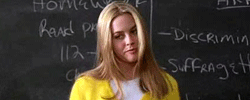Reviews
Allison Anders
USA, 1992
Credits
Review by Beth Gilligan
Posted on 03 July 2006
Source Sony Pictures DVD
Categories Chick Flicks
1989 not only marked a watershed year for romantic comedies [with the release of When Harry Met Sally…], but it also proved to be a turning point for the burgeoning American independent film movement. While the debate over what exactly constitutes an “independent” film continues to rage, most critics can agree that the success of Steven Soderbergh’s sex, lies, and videotape helped put the then-tiny Sundance Film Festival (where it debuted) on the map, while the release of Spike Lee’s Do the Right Thing ignited heated cultural debates about race and Drugstore Cowboy and Roger & Me established Gus Van Sant and Michael Moore as a directors to watch.
One of the few female voices to emerge from this movement was Allison Anders, who made her solo feature directing debut in 1992 with Gas Food Lodging. Light years removed from the Meg Ryan and Julia Roberts vehicles that were being churned out for female moviegoers at the time, the film focuses on the relationship between a single mother raising two teenage daughters in a New Mexico trailer park. Outside the barriers of a major studio, Anders was able to tackle issues such as class, race, and the realities of women’s lives, all in a manner utterly lacking in sentimentality.
The film opens with a moving shot of a seemingly endless highway followed by static glimpses of a dusty, dead-end Southwestern town. Shade, the younger daughter, is first seen nestled in a chair in a worn-down movie theater, completely enthralled by the action onscreen. In a voice-over narration (which continues throughout the film, reinforcing the sense of female authorship), she details her obsession with the Elvia Rivero, a [fictional] Mexican actress who starred in a series of weepies in the 1930s and 1940s. While Gas Food Lodging is something of a generic hybrid, its link to the melodramas, or “woman’s films” of this bygone era is unmistakable. Anders’ decision to show a Spanish-language film as Shade’s inspiration underlines the cross-cultural currents that run throughout the movie.
Nora, Shade’s mom, is a diner waitress who has recently parted ways with her married lover. While not struggling to pay the bills, her time and patience is consumed by her rebellious elder daughter, Trudi, who regularly breaks curfew and has stopped attending high school. Consumed by anger (part of which we later learn stems from a traumatic gang-rape experience), Trudi constantly fiddles with her necklace and jacket sleeves, gestures that highlight both her rage and desperate unhappiness.
Trudi’s inability to feel comfortable in her own skin is challenged when she meets a handsome British geologist named Dank, who gives her the attention she craves and (literally) shows her with different ways of seeing the world around her. Her elation, however, is short-lived, for the geologist fails to return to town after a trip as promised and she finds herself pregnant with his child.
Surrounded by this turmoil at home, Shade daydreams about finding the father that abandoned the family long ago and/or finding a man to replace him. Nora, on the other hand, has long given up on the idea of a man coming to the rescue. Rebuffing the advances of her married lover, she wryly remarks, “Women are lonely in the ‘90s; it’s our new phase. I’ve been lonelier. We’ll live.” Although she eventually strikes up a relationship with a satellite-dish installer named Hamlet, her independence has been firmly established.
Shade’s own romantic notions also lead her in unexpected directions. Dejected after a clumsy attempt to seduce her friend Darius, whose sexual ambiguity she fails to detect, she finds herself charmed by Javier, a young man of Mexican descent who works as a projector at her favorite local movie theater. Significantly, the men who captivate and—in their own way—remain faithful to Nora, Trudi, and Shade are outsiders whose identities transcend the borders of their sleepy town. Yet despite their redeeming values, Hamlet, Dank, and Javier do not provide stability for the women. Even Shade, who at one point calls Javier her “twin,” is shown walking on her own at the end of the film, ruminating about the baby girl Trudi has given up for adoption and about other “daughters not yet heard from, not yet born.”
This idea of women linked through generations of struggle resonates throughout the film, from the cramped trailer the family calls home to greasy diner where Nora waits on tables to the sterile hospital room where Trudi’s baby is coldly snatched away from her by its eager adoptive parents. At a time when mainstream Hollywood cinema was content to hash out white-knight fantasies, Anders grasped the realities of women’s lives with an honesty that remains startlingly refreshing and relevant.
More Chick Flicks
-

The Truth About Cats & Dogs
1996 -

Say Anything
1989 -

Gas Food Lodging
1992 -

Pretty Woman
1990 -

Walking and Talking
1996 -

Mean Girls
2004 -

Fried Green Tomatoes
1991 -

Private Benjamin
1980 -

Clueless
1995 -

Erin Brockovich
2000 -

The Bridges of Madison County
1995 -

Bridget Jones’s Diary
2001 -

Working Girl
1988 -

Bend It Like Beckham
2002 -

Bring It On
2000 -

Ghost
1990 -

Truly Madly Deeply
1991 -

The Last of the Mohicans
1992
We don’t do comments anymore, but you may contact us here or find us on Twitter or Facebook.



